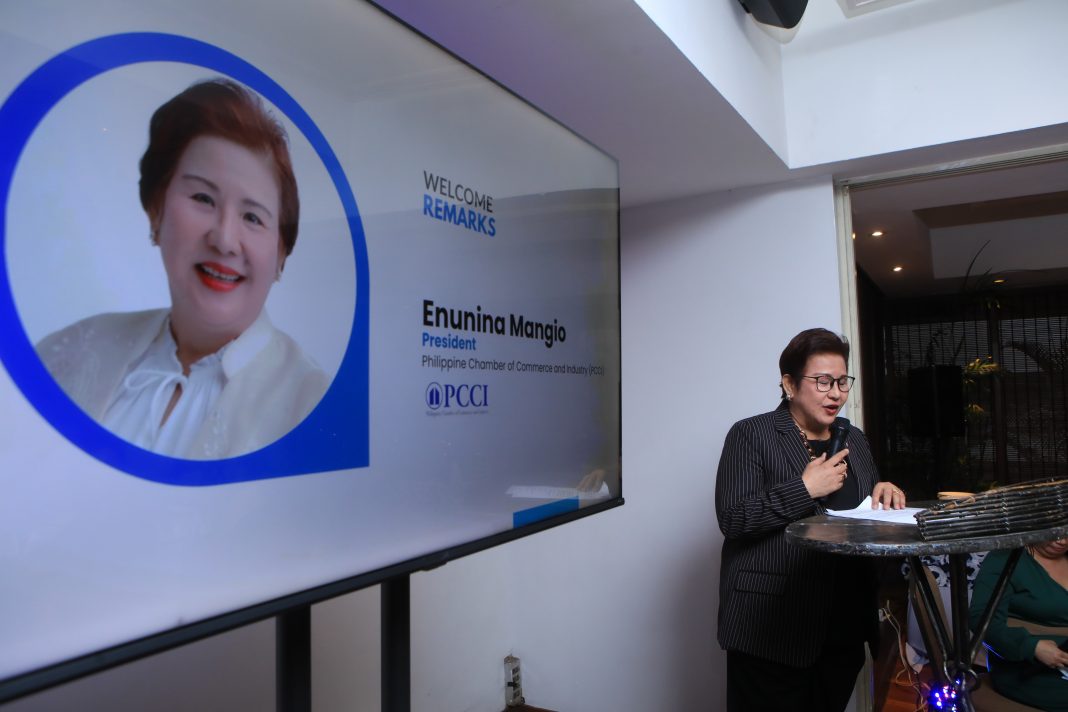Businesses and exporters in the country have urged the government are calling for improved logistics system in the country, stating that logistics is a crucial component affecting the competitiveness of the Philippines and making everything in the country more expensive than its neighbors.
In separate speeches at the launch of Logisticsnews.PH, Consult Eunina Mangio of the Philippine Chamber of Commerce and Industry, and Sergio Ortiz-Luis Jr., president of the Philippine Exporters Confederation, cited the need to develop an efficient logistics in the country.
EXPENSIVE LOGISTICS COST
“The Philippine business community has long grappled with the challenge of high logistics costs, which currently account for about 27% of our country’s GDP – significantly higher than our neighboring countries in Southeast Asia,” Mangio pointed out.
This disparity, she said, places an enormous burden on businesses, particularly our MSMEs, and ultimately affects the competitiveness of Filipino products in both domestic and international markets.
“The impact of these elevated logistics costs reverberates throughout our economy. When the cost of moving goods from our factories to markets increases, it creates a domino effect: higher prices for consumers, reduced profit margins for businesses, and diminished competitiveness for our exports,” Mangio said citing the timely launch of Logisticsnews.PH.
This challenge has become even more pronounced in recent years as global supply chains face unprecedented disruptions, she said.
BACKBONE
For his part, Ortiz-Luis said that while the Philippines is strategically positioned at the heart of Asia, with access to some of the most dynamic and fastest-growing markets in the world, ”Our potential as a hub for international trade is vast. However, one of the most significant challenges we face is ensuring that our logistics sector can keep pace with the demands of global trade.”
According to Ortiz-Luis, logistics is the backbone of any nation’s trade and export industry. It encompasses everything from transportation and warehousing to customs clearance and last-mile delivery. Unfortunately, he said, the Philippines has long faced logistical hurdles that impede the competitiveness of our exports. “In fact, our exports have not really grown as much as would like it to be and that we can partly blame to the inefficiency of our logistics,” he said.
Our archipelagic geography, coupled with aging infrastructure, fragmented transportation networks, and high shipping costs, has created a bottleneck in our supply chain. The high cost of logistics in the country, he said, makes the country’s exports less competitive on the global stage.
When logistics falters, Ortiz-Luis said exporters feel the impact in several ways. One is it increases shipping cost and storage resulting in reduced profit margin. As prices of products become more expensive, this can discourage foreign partners from sourcing goods in the Philippines.

INEFFICIENT
Inefficient logistics lead to delays, which can damage relationships with international clients and cause penalties or contract cancellations.
Many small and medium enterprises (SMEs) are unable to afford the high logistical costs, preventing them from accessing larger markets or expanding globally.
Poor handling and long transit times can lead to product damage, especially for perishable goods such as seafood, fruits, and vegetables—key export products of the Philippines.
With these challenges, Ortiz-Luis said the government and private sector must work hand-in-hand to enhance logistics capabilities and ensure the smooth flow of goods from factories to international markets.
He also called for more investments in roads, ports, airports, and railways are essential. Projects such as the Build, Build, Build program must continue to focus on improving connectivity across the islands.
Ortiz-Luis also said that technology, such as automated tracking, digital customs processing, among others, is key to streamlining operations. Automated tracking, digital customs processing, and real-time communication tools can help reduce delays and enhance efficiency.
In addition, he called for the integration of sea, air, and land transport, we can create more seamless and cost-effective shipping solutions for exporters.
Collaboration with the private sector can help bring innovative solutions, expertise, and additional resources to address logistical gaps.
Offering subsidies, training, and access to affordable logistics solutions can empower SMEs to participate more actively in the export market.
In closing, Ortiz-Luis said “The future of Philippine exports depends on the efficiency and resilience of our logistics sector. By addressing logistical challenges head-on and fostering innovation and collaboration, we can unlock new opportunities for growth, create jobs, and boost our competitiveness on the global stage.”
“Together, let us build a logistics system that serves as a true enabler of trade—a system that allows Philippine products to reach the world faster, more efficiently, and at lower costs. Our exporters are ready to take on the world; it’s time we give them the support they need to succeed,” he concluded.




